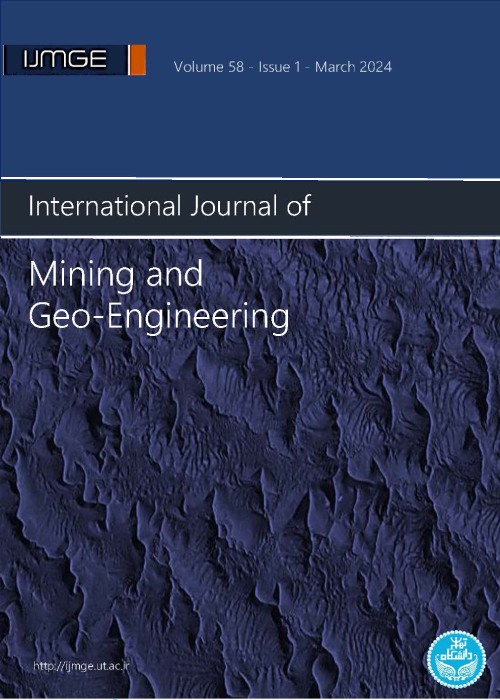The Effects of Ore Properties on the Characterization of Suspension in Settling and Compression
Author(s):
Abstract:
Many studies have considered the effects of suspension properties on the dewatering process but few have focused on ore properties. Thus, the present work studied the effects of ore properties (density, particle size, mineralogy) on the dewatering process based on lab and pilot experiments. A hydrocyclone was used to prepare the required samples for the experiments. To study the effects of mineralogical properties, the sedimentation behaviour of hydrocyclone feed and underflow samples were compared. It was observed that the free-settling velocity of feed (2 to 6mm/sec) was less than in the underflow sample (2 to 7mm/sec) and the final concentration of underflow sample (0.45 to 0.48t/m3) was more than the feed sample (0.44 to 0.47t/m3). Additionally, to study the effects of particle size and density, the sedimentation behaviour of hydrocyclone overflow and feed samples were compared. The settling velocity and final concentration of overflow sample were obtained at 0.15 to 0.4mm/sec and 0.32t/m3, respectively, which was significantly less than the feed sample. This was due to the amount of clay reduction in the underflow sample and particle size and density reduction in the overflow sample. Following on, the pilot experiments were carried out. It was observed that the bed formation of the feed sample tended to overflow in the sample at low flux (10t/m2/day) and tended to underflow in the sample at high flux (28.5t/m2/day). This meant that the long time at lower flux created an opportunity for fine particles to settle easily, similar to coarser particles and as such, ore properties did not play a decisive role in bed formation, but their effects appeared instead at higher flux. Furthermore, it was observed that the underflow concentration increased by decreasing the flux from 28.5 to 10t/m2/day. These increasing amounts were 0.05t/m3 and 0.12t/m3 in hydrocyclone overflow and underflow samples, respectively, at a height of 2.5 metres. This meant that the compressibility and permeability of the hydrocyclone underflow sample was much better than in the hydrocyclone overflow sample, which was clearly a result of the ore properties (density, particle size, mineralogy).
Keywords:
Language:
English
Published:
International Journal of Mining & Geo-Engineering, Volume:48 Issue: 1, Winter and Spring 2014
Pages:
101 to 114
magiran.com/p1324237
دانلود و مطالعه متن این مقاله با یکی از روشهای زیر امکان پذیر است:
اشتراک شخصی
با عضویت و پرداخت آنلاین حق اشتراک یکساله به مبلغ 1,390,000ريال میتوانید 70 عنوان مطلب دانلود کنید!
اشتراک سازمانی
به کتابخانه دانشگاه یا محل کار خود پیشنهاد کنید تا اشتراک سازمانی این پایگاه را برای دسترسی نامحدود همه کاربران به متن مطالب تهیه نمایند!
توجه!
- حق عضویت دریافتی صرف حمایت از نشریات عضو و نگهداری، تکمیل و توسعه مگیران میشود.
- پرداخت حق اشتراک و دانلود مقالات اجازه بازنشر آن در سایر رسانههای چاپی و دیجیتال را به کاربر نمیدهد.
In order to view content subscription is required
Personal subscription
Subscribe magiran.com for 70 € euros via PayPal and download 70 articles during a year.
Organization subscription
Please contact us to subscribe your university or library for unlimited access!


